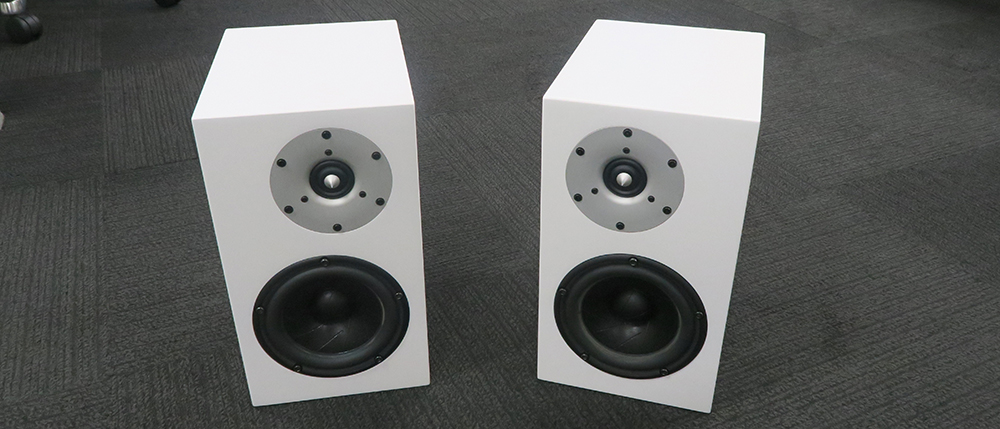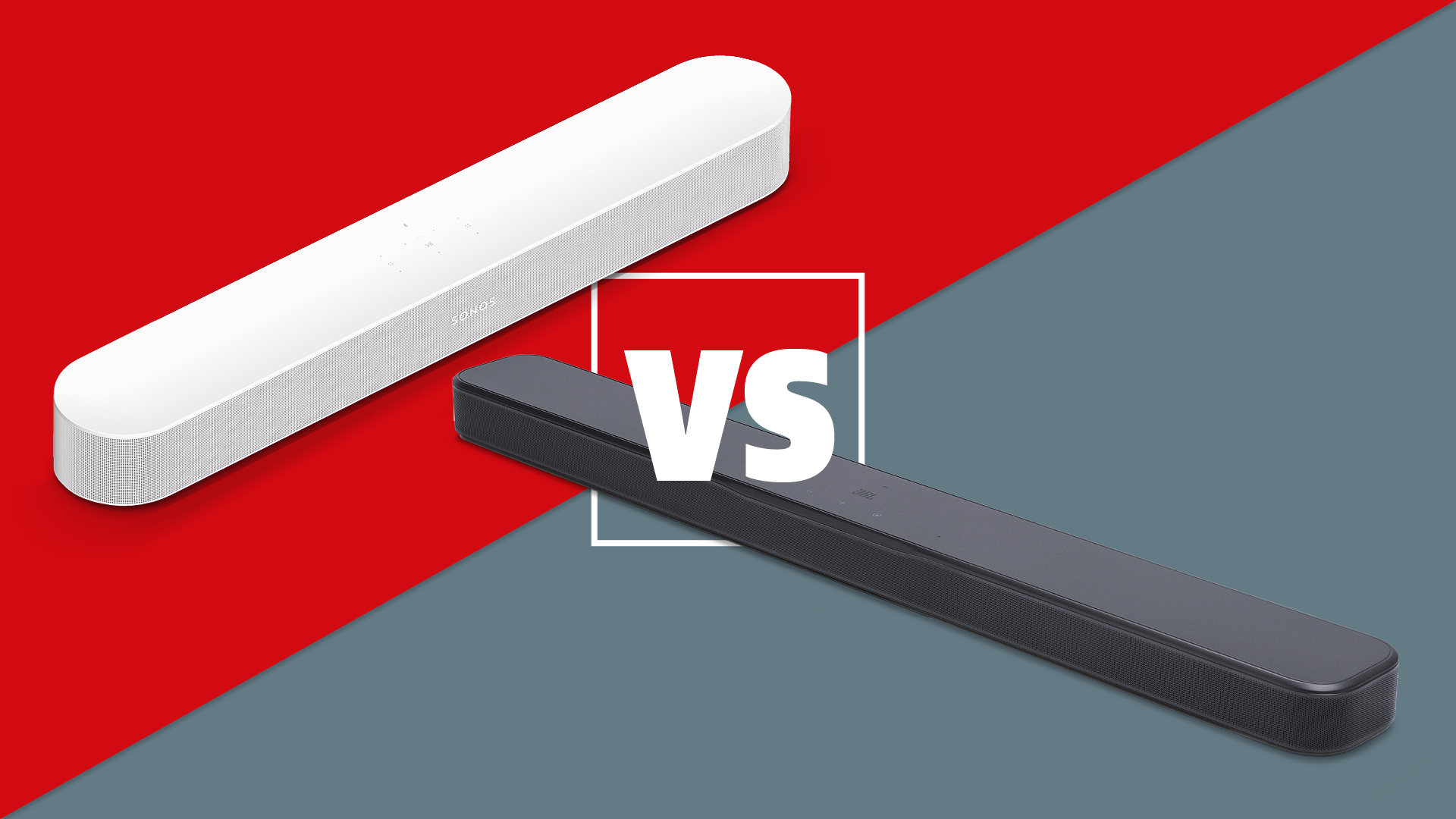What Hi-Fi? Verdict
Serhan Swift’s newest loudspeakers do what they’re supposed to do so effortlessly that music just seems to flow from them organically
Pros
- +
Effortless sonics
- +
Superbly flat & extended response
- +
Super-low distortion
Cons
- -
Two cabinet finishes only
- -
Low sensitivity
Why you can trust What Hi-Fi?
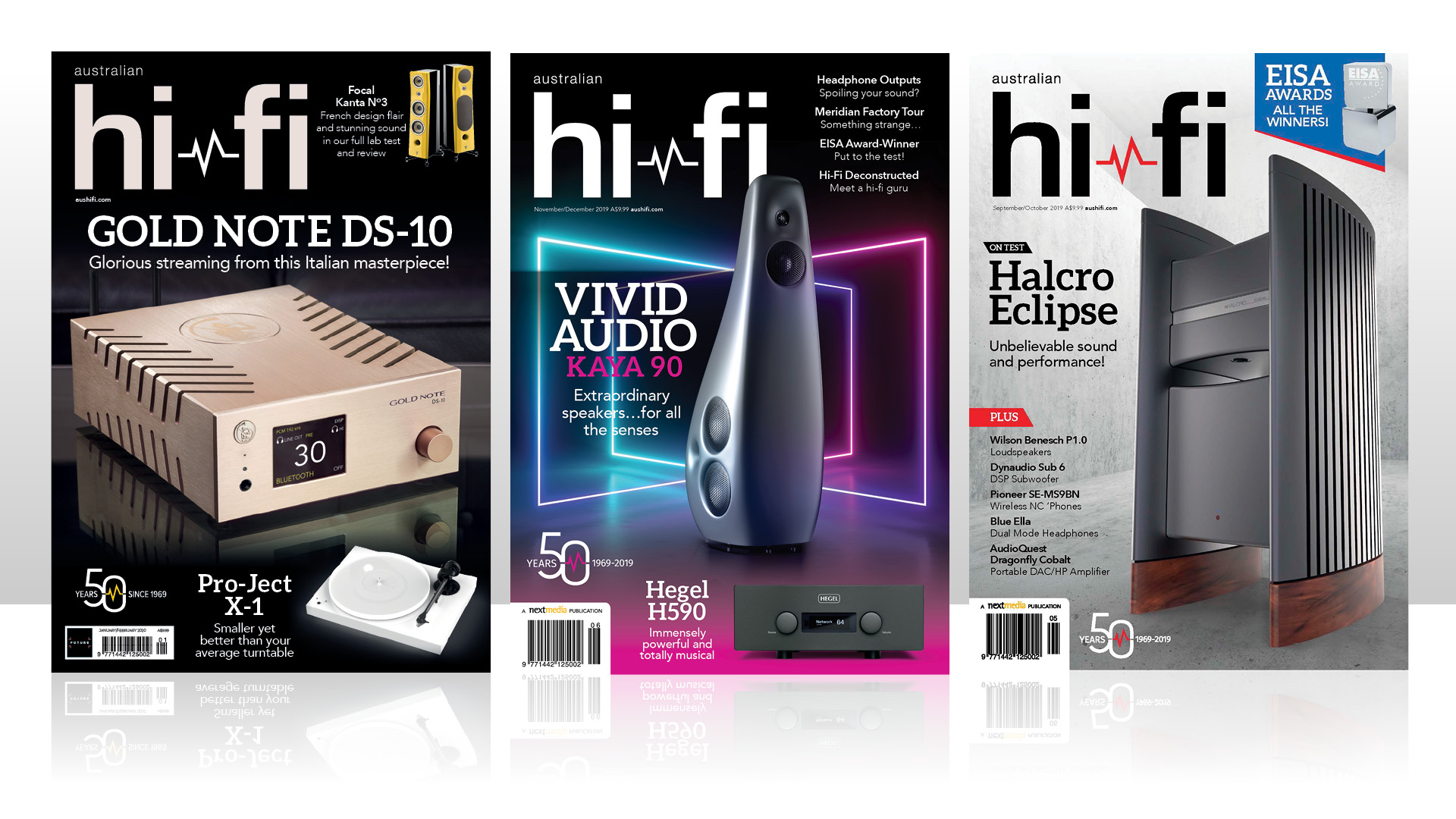
This review and test originally appeared in Australian Hi-Fi magazine, one of What Hi-Fi?’s sister titles from Down Under. Click here for more information about Future publishing's Australian hi-fi and AV titles, including links to buy individual digital editions and details on how best to subscribe.
Serhan Swift’s newest loudspeakers, the mµ2 Mk II, are so different from the original mµ2 that, in my opinion, the two designers (Brad Serhan and Morris Swift) should have given them a completely new model name. Perhaps the duo thought the model name would gain some leverage from the very positive reviews the originals garnered from reviewers such as Stu Smith (Hi-Fi Pig), Jay Garrett (StereoNet) and Peter Katsoolis (SoundStage). Or maybe they stuck with it because the new model looks identical to the old one – the appearance of the bass/midrange driver and tweeter is similar, while the cabinet is exactly the same size and features exactly the same rear-firing bass reflex port. (There is, however, one obvious visual difference: the mµ2 Mk II sport a new, artisan-quality, matte-painted finish, available in either black or white.)
But Serhan Swift is adamant the latest mµ2 is a ‘new’ loudspeaker design: “The new mµ2 Mk II is a totally new loudspeaker,” says Serhan. “All elements – cabinet, woofer, tweeter, crossover – have been carefully re-examined and significantly improved, even where many thought no further improvement was possible. Lessons learned from the original mµ2 Special Edition (as well as our ongoing research into the effects of vibration on all components) – have been expanded upon and applied to the mµ2 Mk II. The new multi-layer cabinet construction now employs additional layers of differing materials, carefully chosen for composition and thickness, for even further reduction in cabinet noise (vibration), energy storage and colouration. Bracing has been further strengthened and we use constrained layer damping material custom-manufactured for the mµ2 by Les Davis Audio.”
“While the woofer and tweeter may look the same as the previous model,” Serhan continues, “both have been improved with even flatter response, smoother roll-off, and lower distortion. Because of these driver improvements, we put in thousands more hours of listening tests and measurements in order to make enhancements to the high-order crossover, which features Solen premium quality air-cored inductors, polypropylene capacitors and non-inductive resistors to take full advantage of the driver improvements. The crossover and the on-axis to off-axis transitions are now even more seamless.” Perhaps not just a mere facelift, then.
Design & build
The mµ2 Mk II is a two-driver, two-way standmount design. The mid/bass driver was developed, designed and hand-built in Videbaek, Denmark, by driver specialist Scan-Speak, a unit from the company’s prestigious ‘Revelator’ range. (Although Scan-Speak is now owned by the Chinese-based Eastech Group, which also owns German driver manufacturer Punktkilde, it operates as a completely independent, Danish-controlled entity, just as Punktkilde remains German-controlled.)
That mid/bass driver is easily recognisable as a Scan-Speak Revelator due to the distinctive appearance of the ‘sliced cone’, which has grooves sliced into its paper surface in an effort to keep its break-up modes under tight control. The roll surround is moulded using Scan-Speak’s ‘low-damping’ SBR rubber compound. Unlike those made from foam (which disintegrate after prolonged exposure to sunlight), this rubber surround is almost completely unaffected by climatic conditions due to its extremely flexible (to allow high-cone excursion) and extremely durable nature.
The Revelator mid/bass driver magnet, meanwhile, uses Scan-Speak’s patented ‘Symmetrical Drive’ design. Here, three Faraday rings fix to the magnet, reducing inductance modulation, minimising second harmonic distortion, and decreasing DC offset at the voice coil (which also reduces harmonic distortion). The ‘SD-1’ version used in this driver (other Scan-Speak drivers use different versions) also enables a narrower air gap between the voice coil and the magnet, resulting in higher flux intensity and lower magnetic reluctance in the circuit, thus increasing the motor system’s efficiency. The driver’s chassis is made from diecast aluminium, with venting below its spider suspension to eliminate the compression effects that can affect performance if no venting is present.
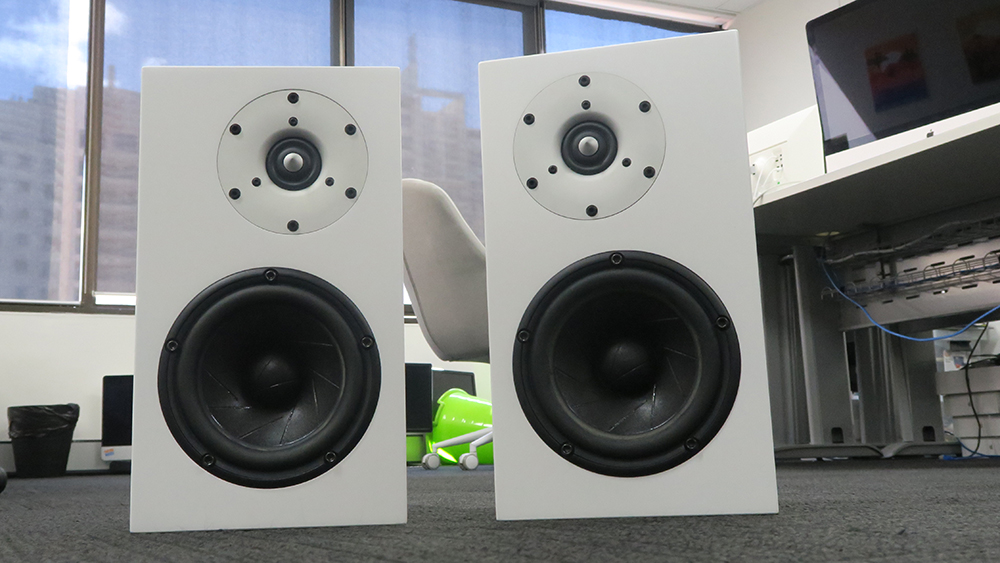
Although the Revelator has a rated diameter of 150mm, this is a ‘nominal’ dimension. The basket’s total diameter is actually only 148mm, while that of the driver’s moving part is only 125mm. The cone’s diameter is less again – just 98mm. But the Thiele-Small diameter is the important specification here as it determines the effective piston area (Sd), and my tape measure put this at 110mm, giving an Sd of 95cm². Lastly, the cone is driven by a two-layer voice coil 38mm in diameter.
The latest hi-fi, home cinema and tech news, reviews, buying advice and deals, direct to your inbox.
Serhan Swift has chosen another driver from Scan Speak’s top-line Revelator range for the mµ2 Mk II’s high-frequency unit (tweeter). It too is instantly recognisable as a Scan-Speak driver, due to its ‘ring radiator’ design combined with the unique shape of its central phase plug. The ring radiator is, in essence, a dome radiator, but instead of the dome being anchored only at its periphery (the surround suspension), it has a fixed phase plug at its centre.
This phase plug addresses a problem that affects all soft dome tweeters. That is, that at high frequencies the very tip of the dome collapses inwards when the dome moves outwards into the room (due to air pressure), becoming convex rather than concave. When the dome heads back towards the speaker cabinet, it becomes convex again. The release of energy that occurs as the dome tip ‘snaps’ between the two different shapes results in resonance. This is one of the reasons why some driver manufacturers use tweeter domes made of metal, the idea being to make the dome so stiff that it cannot collapse.
In a ring radiator design, such as the Revelator R2904/7000000 model used in the mµ2 Mk II, the central fixed phase plug (which, in case you were wondering, is that very obvious spike at the tweeter’s centre) prevents the centre of the ring radiator from moving, with the high frequencies created instead by two ring-shaped diaphragm sections moving. The smaller ‘rolls’ of these two rings mean that any potential resonances are moved to a high frequency beyond the range of human hearing.
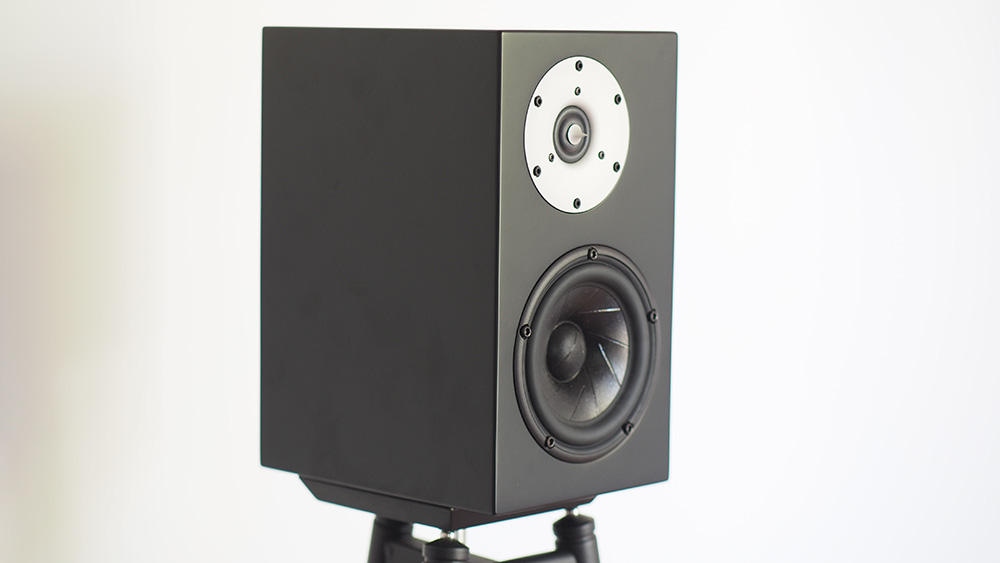
Type Standmount
Drive units ScanSpeak 1-inch Revelator ring radiator tweeter; Scanspeak 5-inch Revelator mid/bass
Ported? Yes (bass reflex)
Bi-wire? No
Impedance 8 ohms
Sensitivity 84dB
Dimensions (hwd) 32.2 x 18, x 23.6cm
Weight 7.8kg (each)
Finishes x 2 (matte black, matte white)
However, there is another advantage to using a ring radiator tweeter over an ordinary dome design – and it’s more related to performance than most manufacturers would like you to believe: driver-to-driver consistency. A tweeter’s manufacturing process is so complex that it’s extremely difficult to ensure one unit is the same as the next – that the hundredth tweeter coming off the production line is identical to the first (and the second, and the third...).
Why? Because loudspeakers are electromechanical devices, it is very easy for there to be variations between them. There could be too much glue on one, too little on another, glue on one applied at a different temperature and/or humidity to that on another... not to mention batch-to-batch variations in the glue itself. While they might sound subtle, these differences will affect a tweeter’s frequency response, distortion, dispersion... every aspect of its performance really! The beauty of the ring radiator design is that, on the whole, its performance is slightly less sensitive to variances introduced during the manufacturing process compared to a traditional dome design.
The mµ2 Mk II’s crossover network uses pair-matched Solen capacitors and air-cored inductors. In the case of the latter, each is measured individually and then, if necessary, custom-trimmed to ensure the correct inductance. The network’s design is said to be a Linkwitz-Riley fourth-order electroacoustic, achieved by using a second-order slope for the mid/bass driver and a third-order for the tweeter. Serhan Swift is a little coy about specifying the exact crossover frequency, with Swift saying: “We don’t want to be too specific because the acoustic crossover will depend on whether you’re listening on-axis or off-axis (horizontally), and whether your ears are above the tweeter axis or below it (vertically).” He did, however, state that the electronic crossover frequency was “in the high 2s”.

The mµ2 Mk II is a bass-reflex design, the port exiting through the rear panel. The port is 100mm in length, 42mm in diameter and made entirely of super-smooth ABS (many are part-ABS, part-cardboard).
Each mµ2 Mk II cabinet has specified dimensions of 322 x 180 x 236mm (HWD), though speaker grilles at the front and protruding speaker terminals at the rear take actual depth to 277mm. You’ll need to allow for a little more depth if you’re planning on inserting banana plugs into the speaker terminals (rather than bare wire or spades), too.
The cabinets aren’t just your typical MDF affairs, either: they’re made out of a sandwich of birch-ply, MDF and custom damping materials developed and designed by none other than Les Davis, the man behind the audio isolation device company that bears his name, and the developer of the Entropic Isolator.
Made by Cardas Audio, the speaker terminals are very high-quality, manufactured from high-purity copper bar stock that is then plated with a silver/rhodium amalgam.
And what about the ID plate that sits above those terminals and bears two signatures? It’s attached only after a rigorous build process that involves both designers personally. The company says: “Each pair of mµ2 Mk ll takes 3 days from start to finish under the watchful eyes of Chief Loudspeaker Designer Brad Serhan and Engineering Director Morris Swift. Brad performs final testing and then he and Morris proudly sign each unit.”
Though you could, of course, position the mµ2 Mk II on a shelf or side table, they are designed for standmounting. Serhan Swift doesn’t actually manufacture a matching speaker stand, but it does recommend one – the Italian-made SolidSteel SS6, designed by Moreno Conti which, as you can above, is a tripod design comprised of three tubular supports and crimped steel bar stabilisers. The stainless steel spikes at the base of the tubes are removable to allow the frame to be filled with your choice of damping material (if deemed necessary). The top plate is decoupled using steel ball bearings. The height of each SolidSteel SS6 stand is around 625mm, putting the mounted mµ2 Mk II’s tweeters nicely at around the ear level of seated listeners.
I haven’t mentioned it until now, but what you might have already noticed from looking at the images is that the mµ2 Mk II speakers are mirror-imaged – on one speaker, the tweeter is above and to the right of the mid/bass driver; on the other, it’s above and to the left. So which is the left-channel speaker and which is the right?
If you’re looking for a definitive answer, you’ll be disappointed because there isn’t one. Which way round you put them all depends on how far apart they are placed relative to the listening position, and how far your listening position is from the speakers’ plane. As a general rule, if the speakers are relatively close to one another and you are also relatively close to them, the tweeters should be outer-most. If the speakers are further apart and you’re listening from a greater distance, the tweeters should be on the inside. Curiously, if you move even further away, you should revert to the outer-most tweeter option. Unfortunately, even this rough guideline will be affected by the proximity of side walls and large furniture items, so it’s really just a case of trying both configurations and choosing the one that delivers the best stereo image at the listening position.
My only advice when you’re doing this is that you position the speakers very slightly off-axis from your listening position, as I found this resulted in the best sound quality. As with all small bookshelf/standmount designs, bass levels and extension will increase if you position the mµ2 Mk II close to a rear wall.
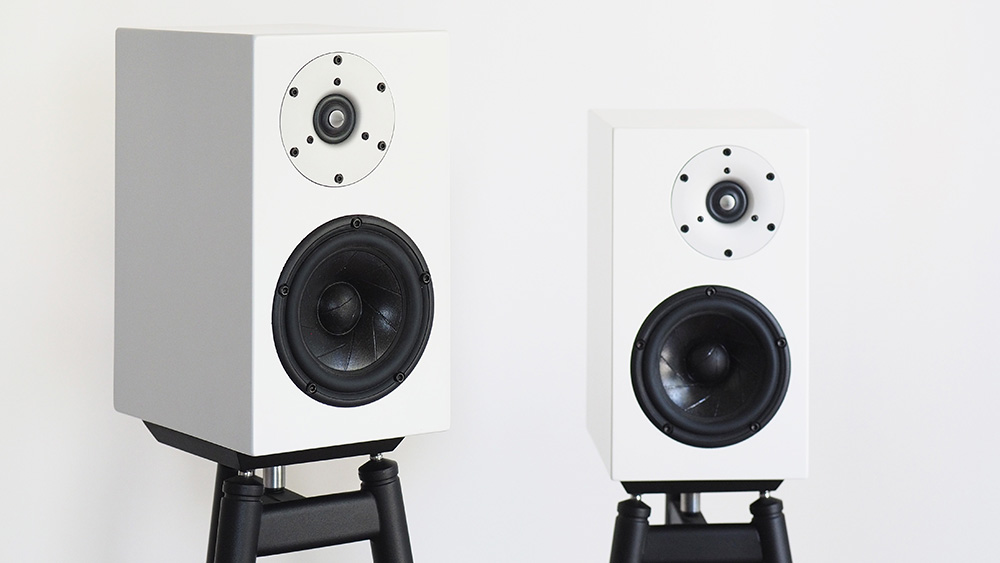
Sound
Perhaps the greatest accolade one can bestow on any pair of loudspeakers is that they do what they’re supposed to do effortlessly, and I found this to be true of the mµ2 Mk II – music just seemed to flow from them organically. When listening to them, I wasn’t thinking about a signal source delivering the music... or the interconnects, amplification and cables involved as well. Indeed I forgot about the mµ2 Mk II too – I was just listening to the music! When a loudspeaker has this effect on you, particularly in the high-pressure environment of testing and review writing, you know it’s special.
This skill of effortlessly delivering music that the Serhan Swift mµ2 Mk II show off so well made me very tempted to cut short my usual listening sessions and just write up a review conclusion basically saying: ‘You’ll know what I am talking about the instant you hear a pair for yourself’. But I’m led to understand that many readers might feel a little shortchanged if I took such a straight and narrow path. So here goes a more comprehensive effort that meanders a little before it arrives at its final destination...
My first recommendation is that you start your listening session by playing instrumentally sparse music, with just a single vocalist accompanied by one or two instruments, preferably recorded as naturally as possible. My first candidate matching that was Michelle Shocked’s very first album, ‘The Texas Campfire Tapes’. You wouldn’t necessarily choose this album for its recording quality because it was, literally, recorded outdoors, around a campfire in Texas at night... using a Sony Walkman cassette recorder. Despite this – or perhaps because of it – the sound is very real, not least that of those damn crickets in the background!
Although the mµ2 Mk II delivered Shocked’s voice with the utmost realism, what truly shocked me (sorry!) was their ability to reveal the movement of the Walkman during the recording as well as when Shocked moved her mouth or her guitar whilst performing. One obvious example is when she sings ‘I’m living alone now’ in the opening track 5A.M. in Amsterdam, but the album is replete with examples of both revelations.
The Secret Admirer is a notable track mainly because you can instantly hear how Shocked had tweaked the tuning on her guitar from the previous track, during which it went slightly out of tune. The realism of the fret noises on Down on Thomas Street is delivered perfectly by the Serhan Swift, as are the sounds of her tapping the body of her guitar. Needless to say, the tonal quality of her acoustic guitar is perfect. You can also tell that she isn’t exactly in the backwoods by the regular sound of motor vehicles in the background – again, beautifully delivered by the mµ2 Mk II.
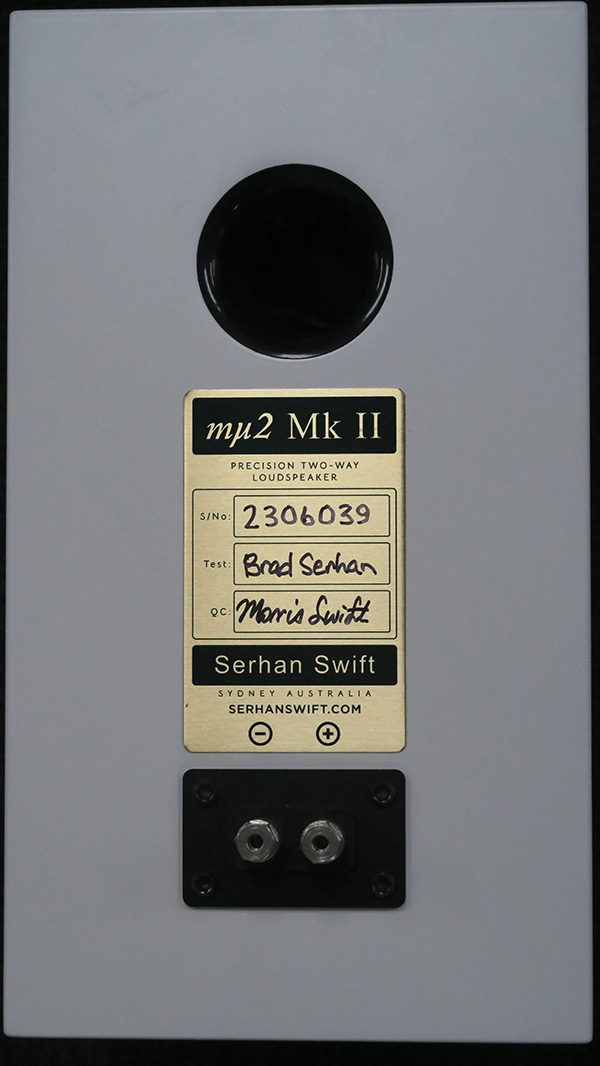
One issue with super-transparent speakers that are capable of revealing the tiniest details is that sometimes you don’t really want to hear them! Very occasionally, I was hearing the effect of tape flutter when Shocked played higher on the fret board, perhaps most noticeably on Goodnight Irene due its slower tempo. Thankfully, it was not so noticeable that it detracted from my enjoyment, and as most of the tracks are fairly up-tempo (not least her terrific take on Paul Simon’s Stranded in a Limousine), I didn’t hear the effect all that often.Firing up an album with real production values proved that the Serhan Swift mµ2 Mk II’s do super-smooth with panache. ‘Big Time’, Angel Olsen’s sixth studio album and her first real foray into country, is nothing if not lusciously smooth, and listening via the mµ2 Mk II was revelatory, whether we’re talking the achingly beautiful sound of the lap steel guitar on All the Good Times, the pedal steel on Dream Thing and This is How it Works, or the organ, harpsichord and clavichord (all played by Drew Erickson) on those and other tracks. Olsen’s voice is so fantastic that she really didn’t need it to be drenched in reverb, but it really works well on this album and was very tastefully delivered by the mµ2 Mk II.
Erickson also plays the piano on many of this album’s tracks, but it’s a particular feature on the second-best track (Chasing the Sun), and the one which provided my first real opportunity to hear how well the mµ2 Mk II delivered the sound of a piano, which is often held to be the most difficult instrument for loudspeakers to reproduce. The instrument certainly posed no difficulties for the Serhan Swifts – the piano sounded full of depth, particularly in the bottom octaves, and tonally rich (including overtones) across the entire keyboard span. The sonic decay of the sustained strings was a lesson in level accuracy, too.
So good it was that I switched to auditioning solo piano, first with Simone Dinnerstein playing possibly my favourite long-form musical work, J.S. Bach’s ‘Goldberg Variations’. Normally, I’d listen to Glenn Gould’s version from 1984, my favourite version of this work, but Dinnerstein’s version is excellent, and the sound (and tuning) of her piano is way better than that of the one Gould uses for his performance (his much-abused Steinway CD 138, if I recall rightly).
The recording quality on Dinnerstein’s version is also better due to the involvement of Grammy award-winning producer Adam Abeshouse, the backing of Telarc, and the fact that it was recorded in the fabulous-sounding auditorium of the Academy of Arts and Letters in New York, on its newly restored (by Klavierhaus) 1903 Hamburg Steinway Model D concert grand (you can’t beat the Steinways that were built in Germany... these days, many are not!)
It’s not only Dinnerstein’s pianism I admire when listening to the Goldbergs, I also like the way she takes liberties with the score (like Gould), repeating some variations and not others, and sometimes only part of a variation. She also follows in Gould’s shadow when playing repeats, playing first legato, and then staccato (or vice versa), plus her ornamentation is both pretty and varied as well as ultra-precise. She doesn’t, however, give the ‘lilt’ to the canons that Gould manages to incorporate. (If you don’t think you’ve heard ‘Goldberg Variations’, you have if you’ve seen ‘The Silence of the Lambs’, which features the Aria forming the basis for the entire work).
I must recount a horrible experience regarding Bach that I had recently. My all-time favourite work of his is the Gigue from his French Suite No. 5 in G major, and the version I most like is by Susan Hammond from her album ‘Mr Bach Comes to Call’ (supposedly for children, but everyone should own a copy; you can listen to Part 1 via YouTube.) Well, my horrible experience was hearing this work as played by a computer (MIDI, in other words) – it was excruciatingly bad. Hear how bad [it’s on Wikipedia], then listen to Hammond’s version – even if it is on YouTube: It’s proof positive that AI isn’t going to take over in the music world!
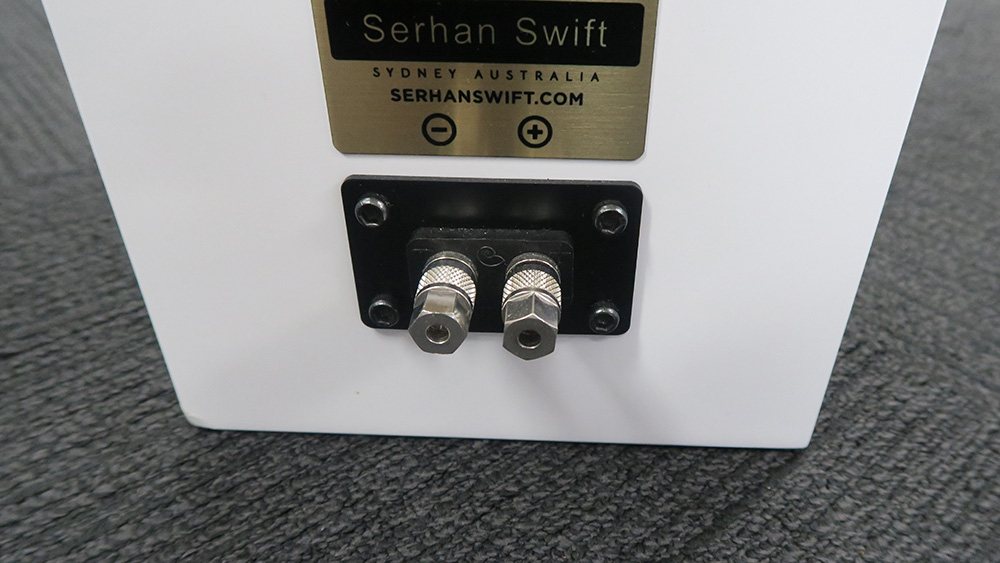
But back to the mµ2 Mk II, if only to say that if you turn the volume up a bit, you will forget you’re listening to a recording and will be instead enjoying a live piano rendition in your listening room. Speaking of volume increasing, you will need to ensure your amplifier is sufficiently powerful to drive the mµ2 Mk II to your preferred listening levels without clipping, because my speakers are inefficient (86dBSPL/w/m) and it was immediately obvious (from me having to turn the volume on my preamp much higher than I would with my own speakers) that these Serhan Swifts are even less efficient. That said, I only have 100 watts per channel at my disposal at present and that proved more than enough power to put the mµ2 Mk II on song.
Updating the piano music to this century, I played Alicia Keys’ album ‘Songs in A Minor’, which adds considerable instrumentation. Get past Piano & I and play Girlfriend, and you’ll quickly hear that, despite their modest size, the mµ2 Mk II can crank out quite a bit of deep bass – more, I’d imagine, than most listeners will be able to use, particularly those with modestly sized listening rooms (room size is the primary limiting factor for bass reproduction due to the long wavelengths of bass frequencies, though these days I’d venture that the primary limiting factor on deep low-end is more likely to be the sensibilities of your neighbours!).
The album’s big hit was, of course, Fallin’, which the mµ2 Mk II deliver beautifully, from the synth bass to the piano, organ, choir and, of course Keys’ own vocals, whether she’s singing the lead or being her own back-up singer. This track also reveals the speakers’ soundstaging ability, which is second to none, in part due to the insanely high quality of the drivers. The same is true of the stereo imaging – it’s extraordinarily good, again partly because of those drivers but also down to the superb quality of the mµ2 Mk II’s crossover network, with its Solen hand-trimmed air-cored inductors, polypropylene capacitors and non-inductive resistors.
To see how well the mµ2 Mk II could deliver the sound of a male vocalist, I turned to Patrick Walker’s album ‘Perfect Light’ (on which he refers to himself as ‘40-Watt Sun’), and once again the speakers were spot-on, particularly in the highest frequencies. The cymbal sound is ‘just right’. Sticking with male vocals but going for something heavier, I reckoned it was time for last year’s tour-de-force from the Arctic Monkeys: ‘The Car’. There are those cymbals again, but just listen to that glorious string quartet – that is, if you can tear yourself away from the poetry of the lyrics. Sculptures of Anything Goes is another perfect demonstrator of these speakers’ ability to render deep and depthy bass without even a hint of overhang or doubling.
Great bass is also a feature of Camp Cope’s best album to date, ‘Running With The Hurricane’, on which the Melbournian trio is helped out by Cable Ties’ Courtney Barnett and Shauna Boyle. Kelly-Dawn Hellmrich’s inventive bass lines are front and centre throughout, and a perfect counterpoint to Georgia ‘Georgia Mac’ McDonald’s vocals (just listen to her scatting on the title track) and Sarah Thompson’s snappy drumming (... more great cymbal sound!).
Verdict
A well-known and highly credentialed reviewer of my acquaintance once told me how long it takes him to establish whether the loudspeakers he’s been sent for review are exceptional or just another competent design. ‘About sixty seconds,’ he told me. So trust me when I tell you that it will probably take you that length of time when auditioning the mµ2 Mk II to realise you are listening to an exceptional-sounding pair of speakers – one that is exceptionally detailed, exceptionally flat across the midrange and highs, and has exceptionally low distortion and exceptionally precise imaging and soundstaging.
For me, every one of those uses of ‘exceptional’ is deserved, but in the end, the true beauty of Serhan Swift’s newest loudspeakers is that they do what they’re supposed to do so effortlessly; that music just seems to flow from them organically.
MORE:
Australian Hi-Fi Show Sydney 2024 – dates, venue and ticket info
Read more from Australian Hi-Fi magazine
Best wireless earbuds in Australia 2024
Australian Hi-Fi is one of What Hi-Fi?’s sister titles from Down Under and Australia’s longest-running and most successful hi-fi magazines, having been in continuous publication since 1969. Now edited by What Hi-Fi?'s Becky Roberts, every issue is packed with authoritative reviews of hi-fi equipment ranging from portables to state-of-the-art audiophile systems (and everything in between), information on new product launches, and ‘how-to’ articles to help you get the best quality sound for your home.
Click here for more information about Australian Hi-Fi, including links to buy individual digital editions and details on how best to subscribe.
